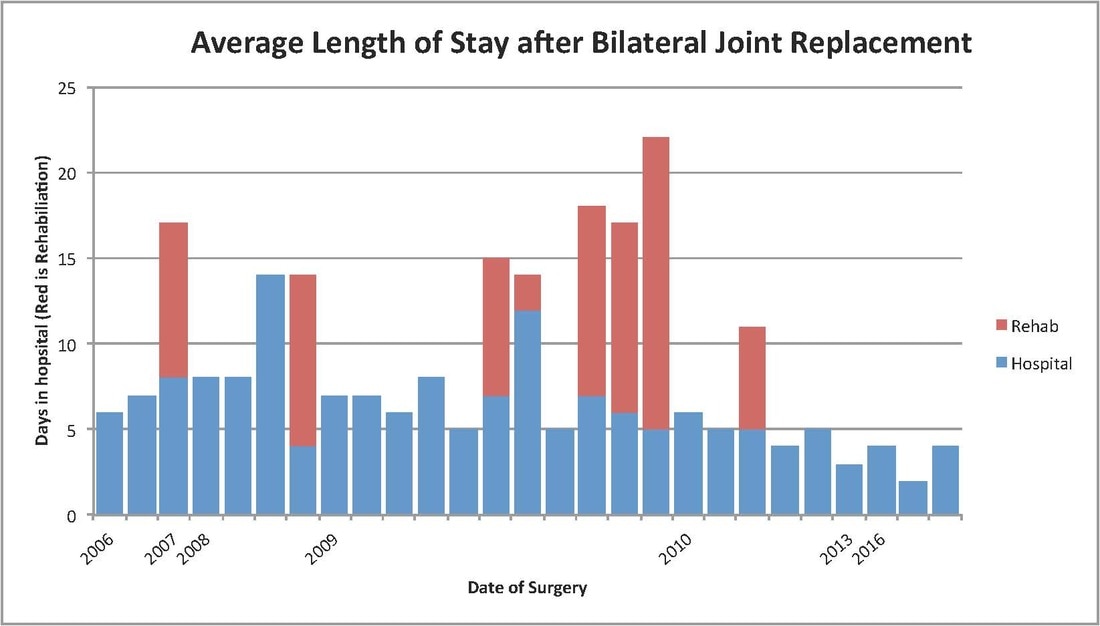Having bilateral joint replacement surgery (i.e. having both hips, or both knees, replaced at the same time) has been advocated as a safe way of curing the “whole patient” in one operation. This is in contrast to the more traditional approach of having a staged joint replacement – having one side operated on, and then the other side operated on at a later date. I have been relatively skeptical of bilateral joint replacement surgery. In my observation, the length of stay was exponentially longer than single joint surgery, and had a much higher requirement for rehabilitation. Around 2009, I accepted the rehabilitation approach, but then swung against it, and essentially stopped performing bilaterals.

Since 2013 I seem to have resurgence in interest. This could be equated to several factors- it could be better patient selection (farmers, other exceptionally fit & healthy individuals), it could be an increase in the post operative doses of ketorolac or an increase in the steroid doses (dexamethasone) via the wound catheter into the joints. For bilateral surgery, we now routinely use a cell saver and tranexamic acid to avoid the need for blood transfusions. It now appears for select patients, bilateral surgery has come of age with only a few days in hospital.
